Unit 3 ANTR 350 - Exam Flashcard Set
1/54
There's no tags or description
Looks like no tags are added yet.
Name | Mastery | Learn | Test | Matching | Spaced |
|---|
No study sessions yet.
55 Terms
Difference between cranial nerves and spinal nerves.
Cranial: emerge directly from the brain, 12 pairs, primarily serve the head and neck region, and pass through the foramina in the skull.
Spinal: emerge from the spinal cord, 31 pairs, primarily serve the rest of the body, and pass through the intervertebral foramina between vertebrae.
CN I
Olfactory
CN II
Optic
CN III
Oculomotor
CN IV
Trochlear
CN V
Trigeminal
CN VI
Abducens
CN VII
Facial
CN VIII
Vestibulochoclear
CN IX
Glossopharayngeal
CN X
Vagus
CN XI
Acessory (sometimes called spinal accessory)
CN XII
Hypoglossal
What CN passes through - Optic canal
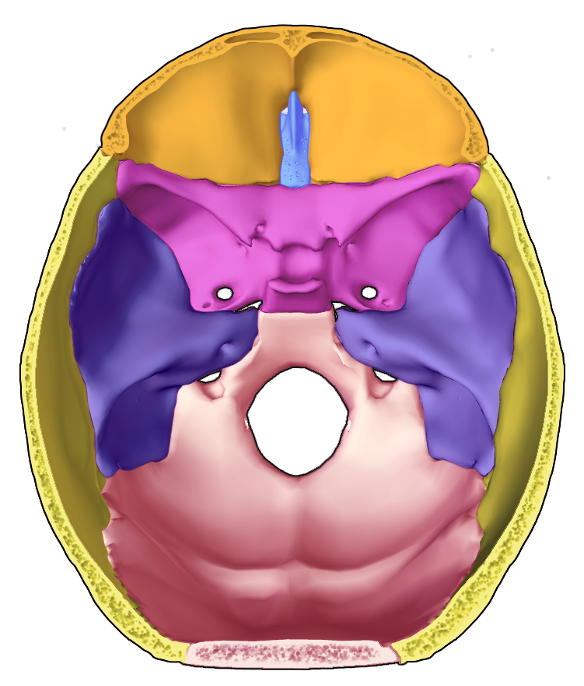
Optic nerve - CN II
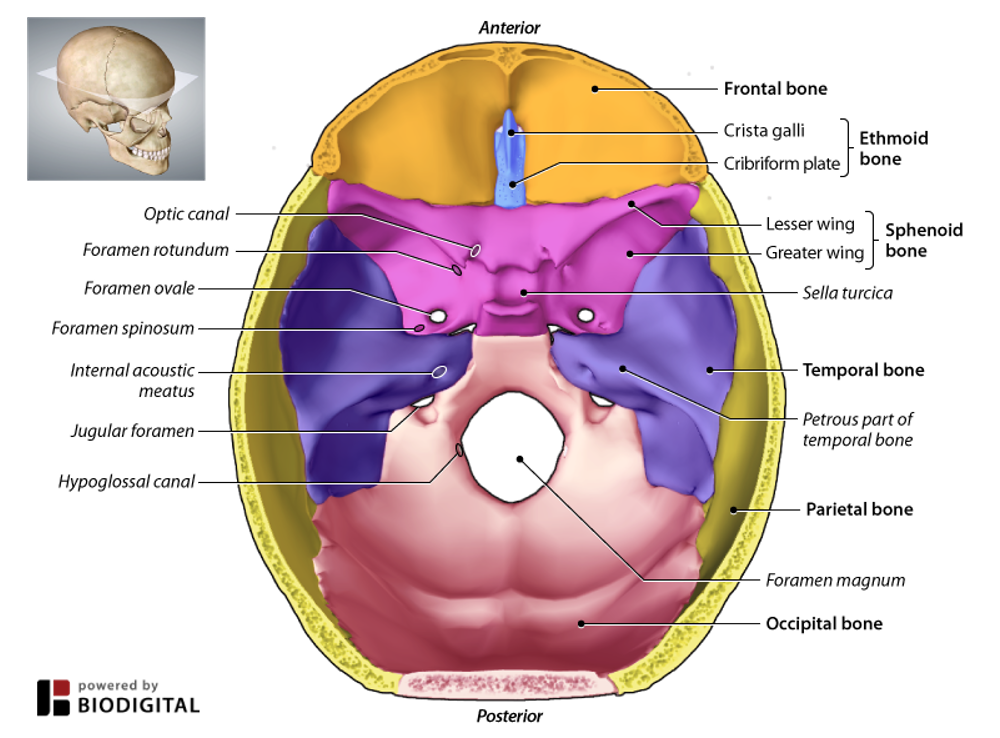
What CN passes through - Superior Orbital Fissure
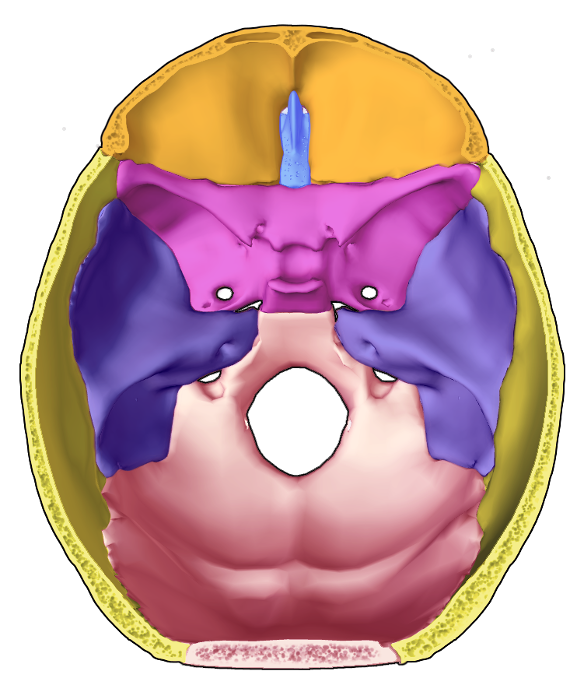
Oculomotor nerve (CN III)
Trochlear nerve (CN IV)
Trigeminal nerve, ophthalmic division (CN V1)
Abducens nerve (CN VI)
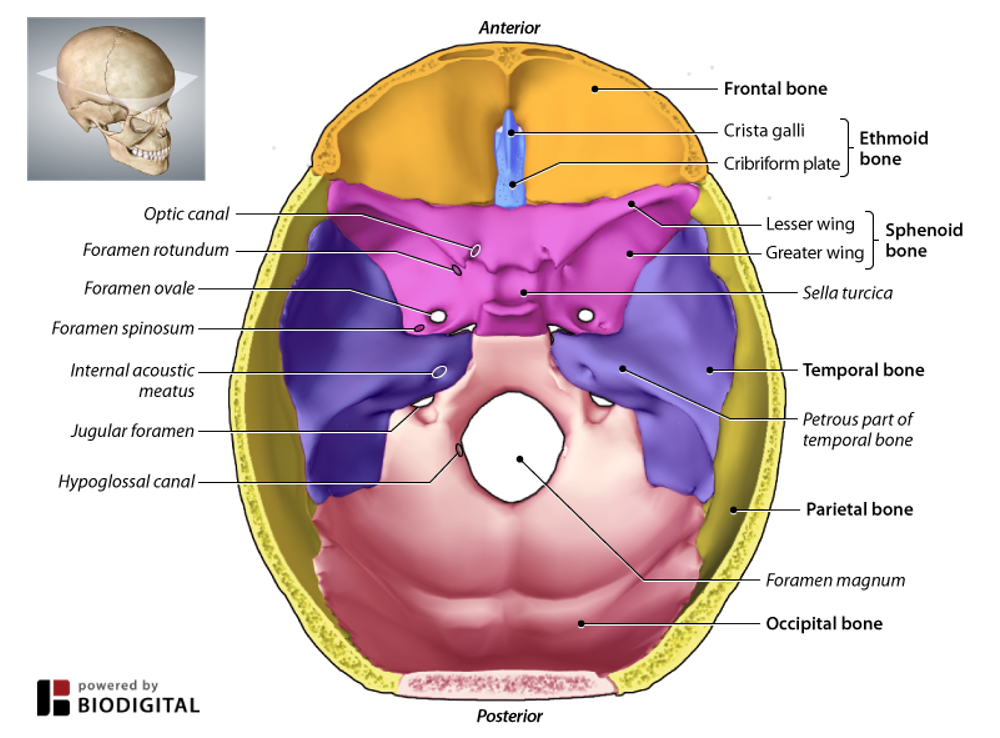
What CN passes through - Cribiform Plate
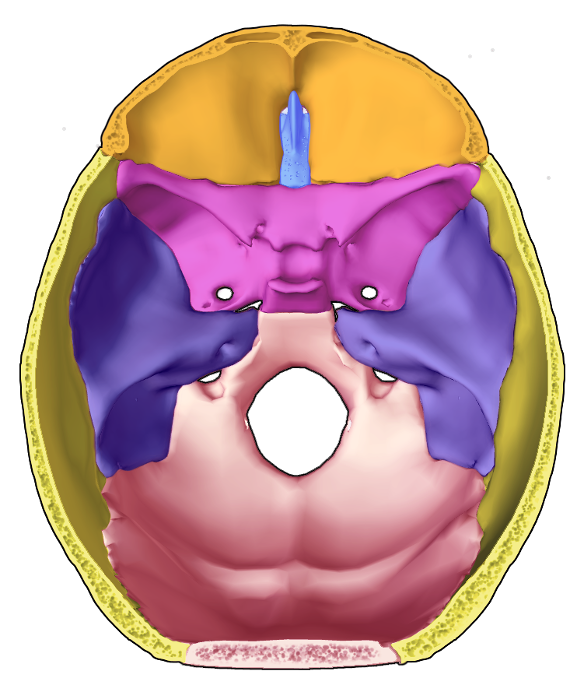
Olfactory nerve (CN I)
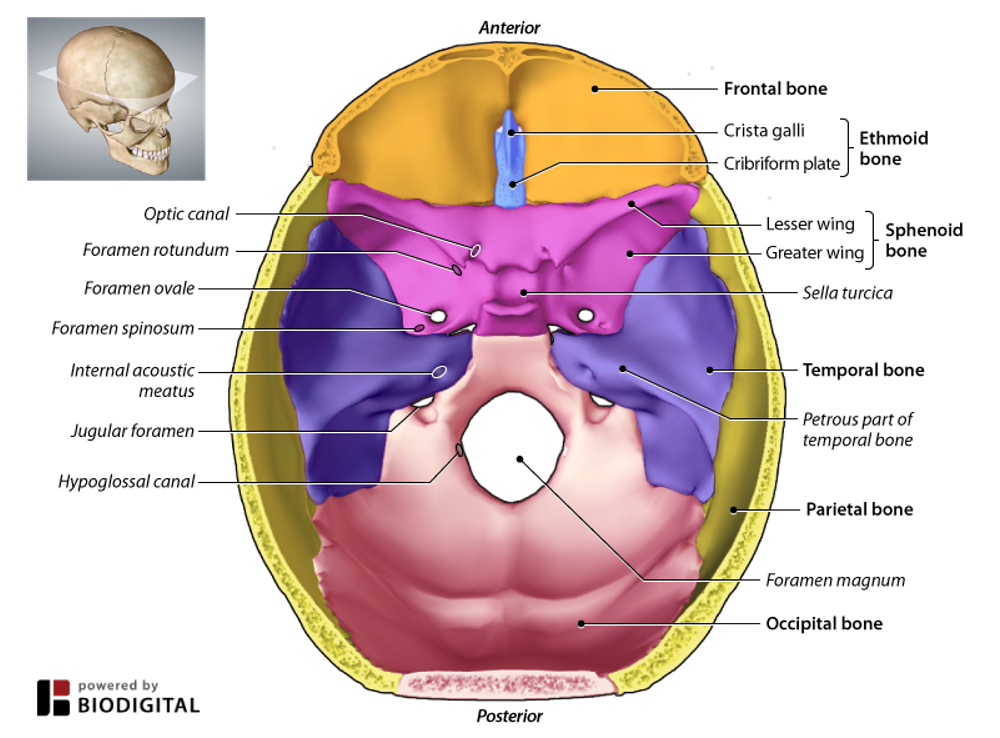
What CN passes through - Foramen Ovale
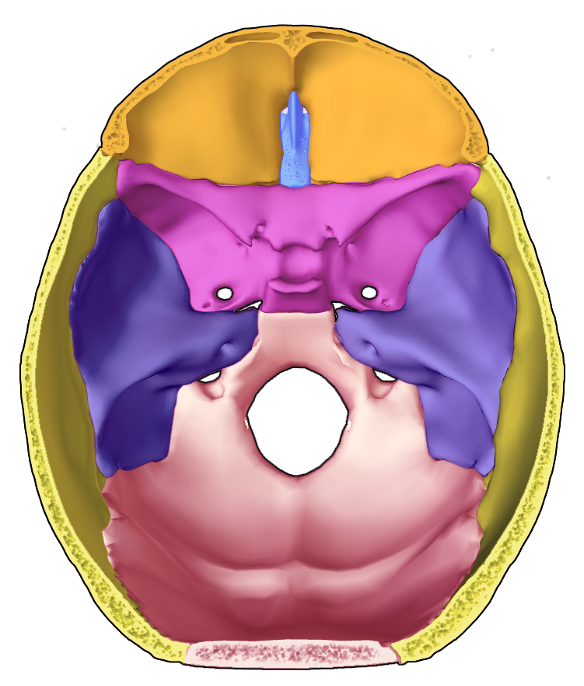
Trigeminal nerve, mandibular division (CN V3)
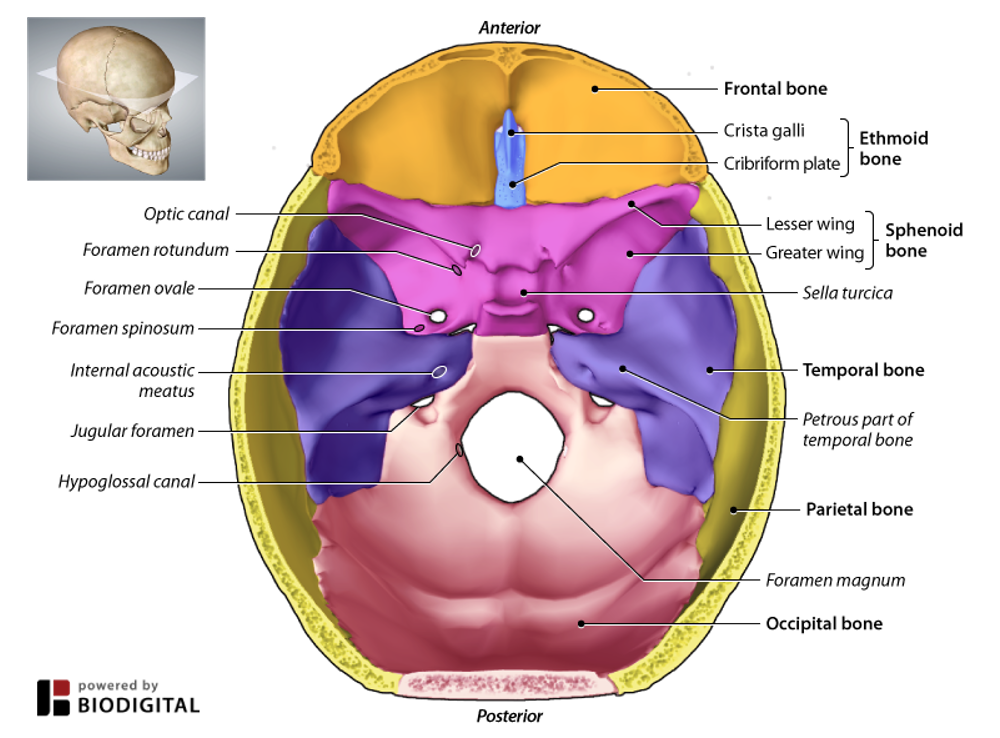
What CN passes through - Internal Acoustic Meatus
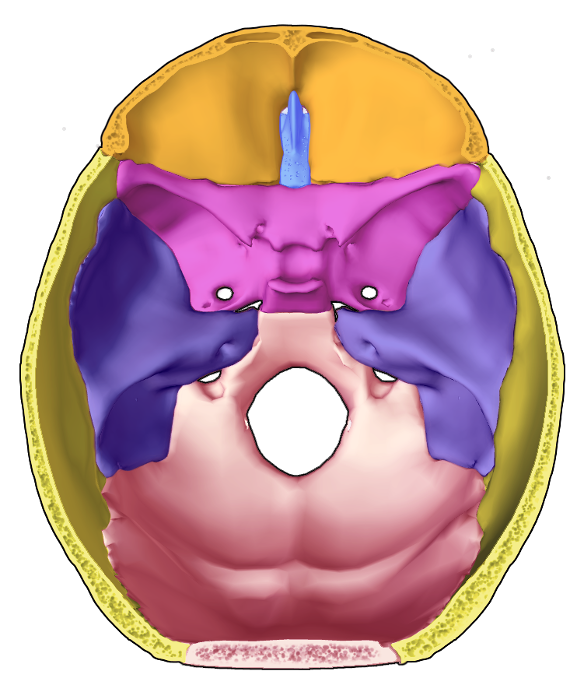
Facial nerve (CN VII)
Vestibulochochlear nerve (CN VIII)
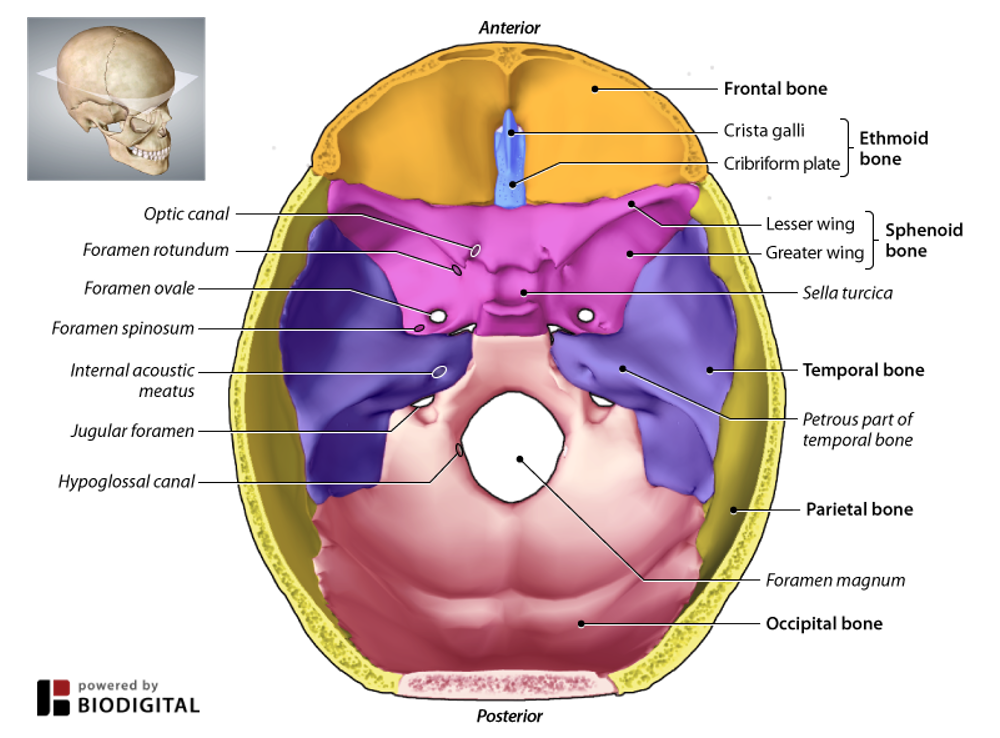
What CN passes through - Jugular Foramen
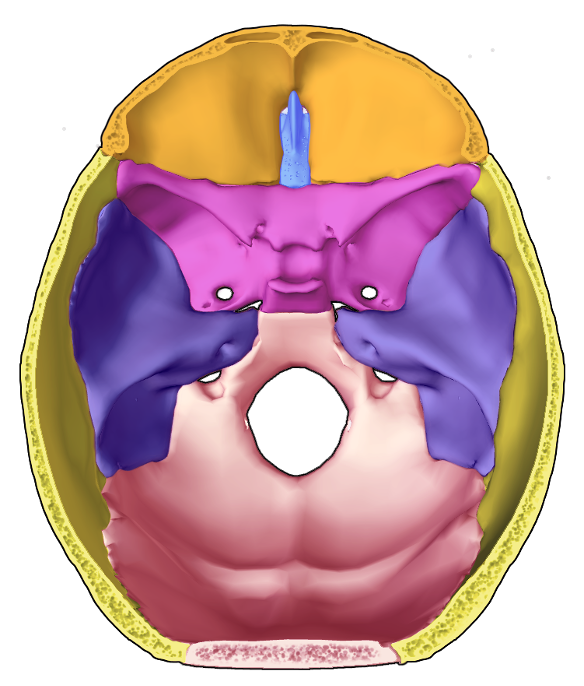
Glossopharyngeal nerve (CN IX)
Vagus nerve (CN X)
Accessory nerve (CN XI)
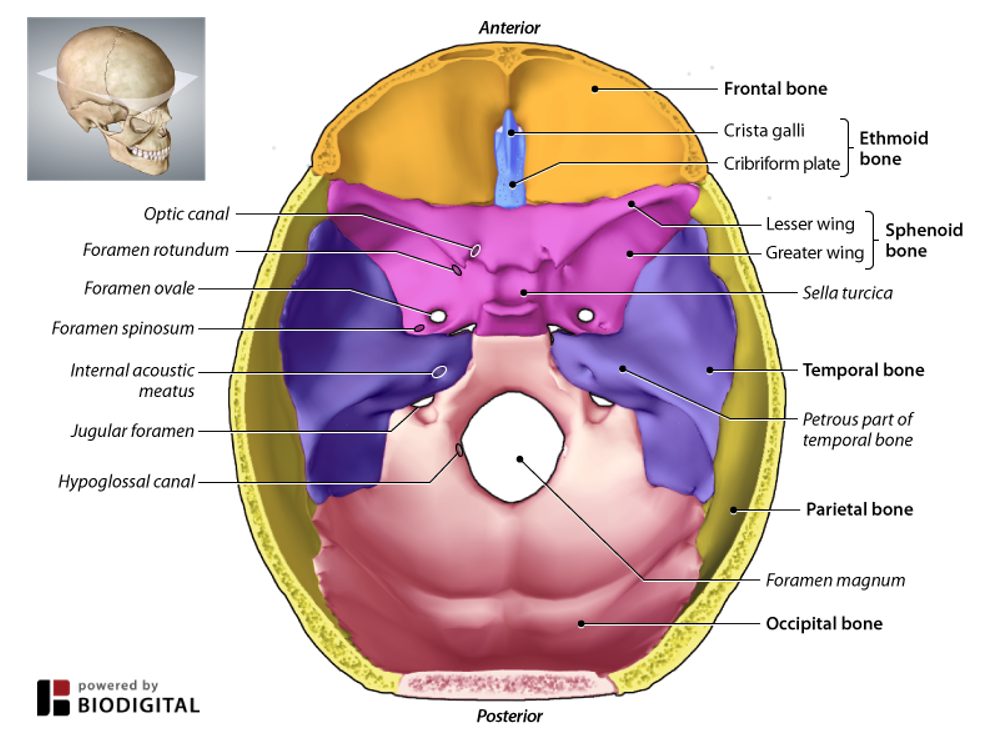
What CN passes through - Hypoglossal Canal
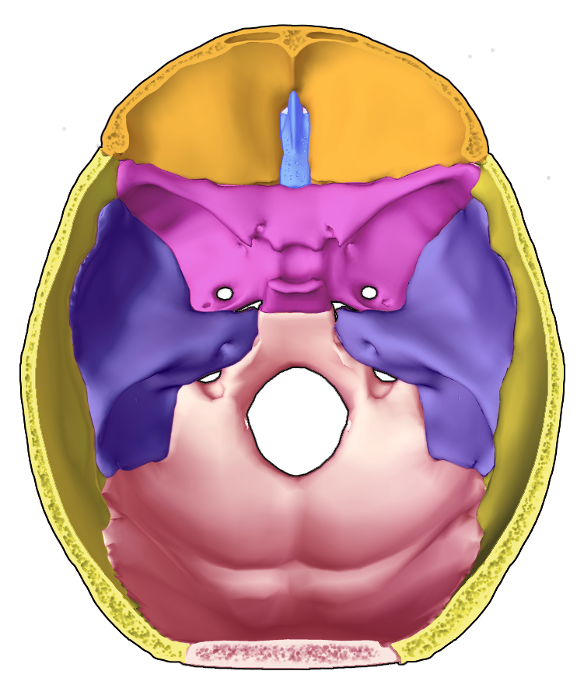
Hypoglossal nerve (CN XII)
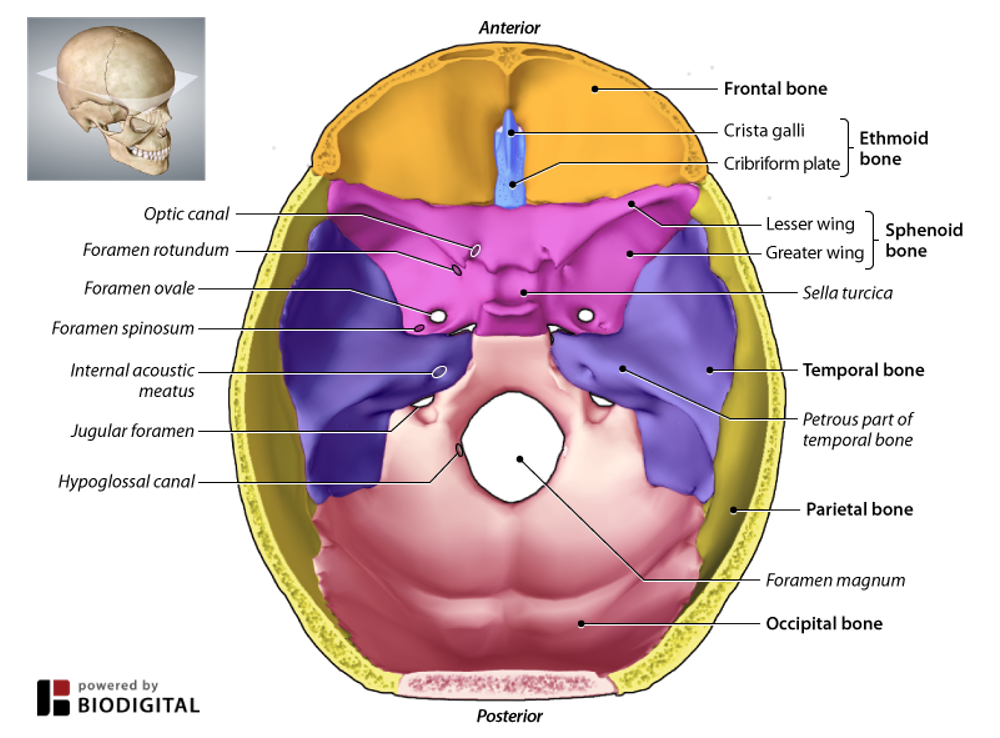
What cranial nerve(s) carry the special sense of - Smell
Olfactory nerve (CN I)
What cranial nerve(s) carry the special sense of - Vision
Optic nerve (CN II)
What cranial nerve(s) carry the special sense of - Hearing and balance
Vestibulocochlear nerve (CN VIII)
What cranial nerve(s) carry the special sense of - Taste
Facial nerve (CN VII) - anterior 2/3 of tongue
Glossopharyngeal nerve (CN IX) - posterioe 1/3 of the tongue
Vagus nerve (CN X) - epiglottis and pharynx
What are the cranial nerve(s) that carry - Motor information only
CN III - Oculomotoer
CN IV - Trochlear
CN VI - Abducens
CN XI - Accessory
CN XII - Hypoglossal
What are the cranial nerve(s) that carry - Sensory information only
CN I - Olfactory
CN II - Optic
CN VIII - Vestibulocochlear
What are the cranial nerve(s) that carry - Motor and sensory information (both)
CN V - Trigeminal
CN VII - Facial
CN IX - Glossopharyngeal
CN X - Vagus
Mnemonic for function type (Sensory, Motor, or Both)
Some Say Marry Money But My Brother Says Big Brains Matter More
Function of CN I
Sense of smell
Function CN II
Sense of vision
Function CN III
Controls most eye movements, pupil constriction, and eyelid elevation
Function CN IV
Moves the ete downward and laterally via the superior oblique muscle
Function CN V
Sensory: Touch, pain, temperature from face, scalp, teeth.
Motor: Controls chewing muscles (mastication)
Function CN VI
Moves the eye laterally via the lateral rectus muscle
Function CN VII
Sensory: Taste from the anterior 2/3 of tongue
Motor: Facial expressions, sallivary and tear glands
Function CN VIII
Hearing (cochlear branch) and balance/equillibrium (vestibular branch)
Function CN IX
Sensory: Taste from the posterior 1/3 of the tongue, sensation from the pharynx
Motor: Swallowing and salivation
Function CN X
Sensory: From the thoracic and abdominal organs, pharynx, and larynx.
Motor: Controls speech, swallowing, and parasympathetic output to hear, lyn
Function XI
Controls sternocleidomastoid and trapezius muscles - moves head and shoulders.
Function XII
Controls tongue movements for speech, chewing, and swallowing.